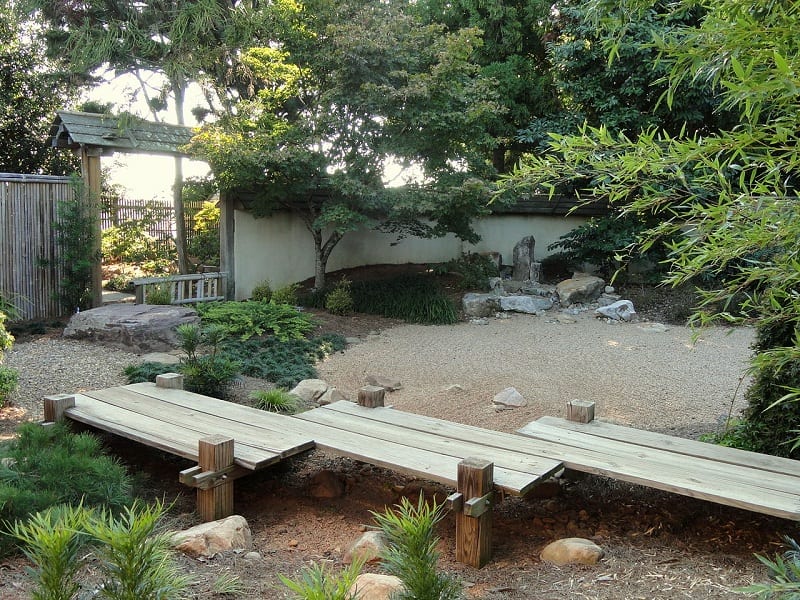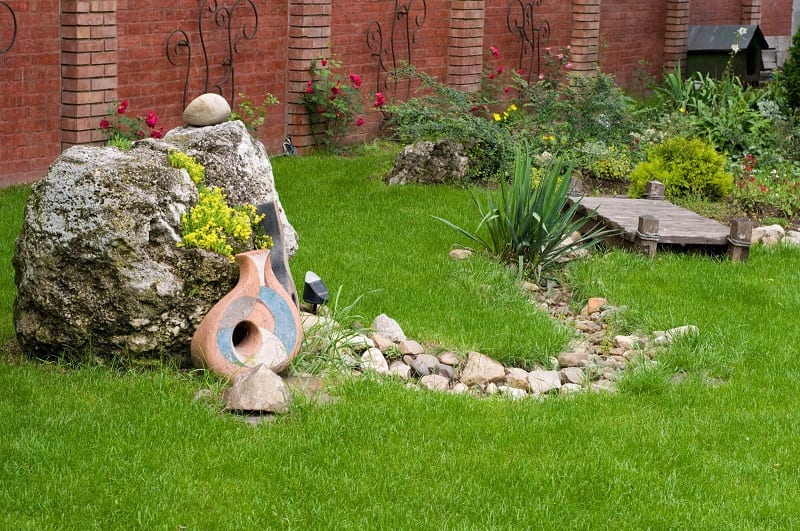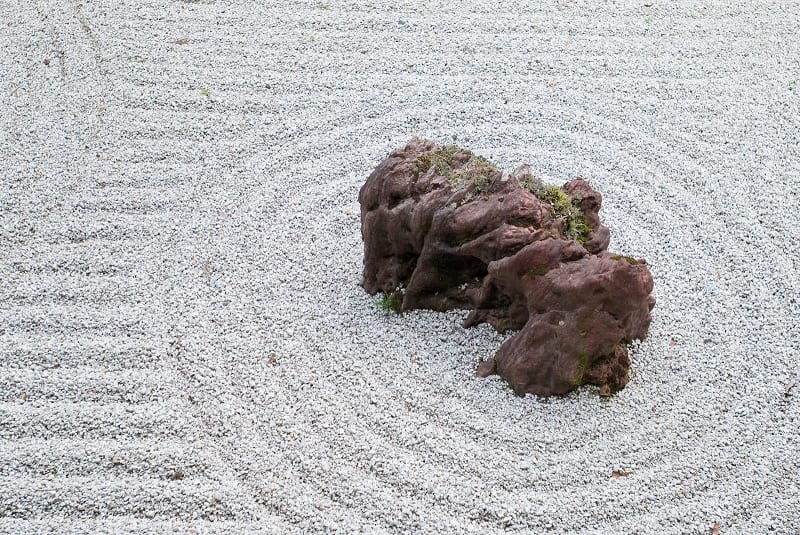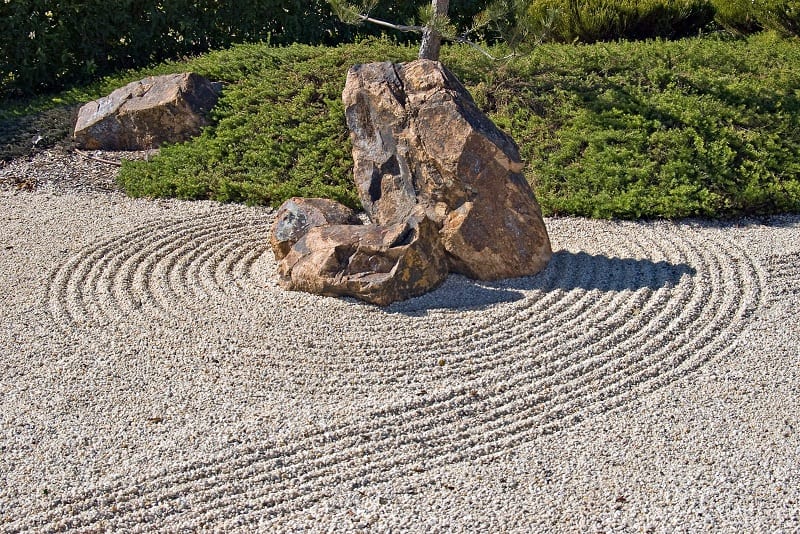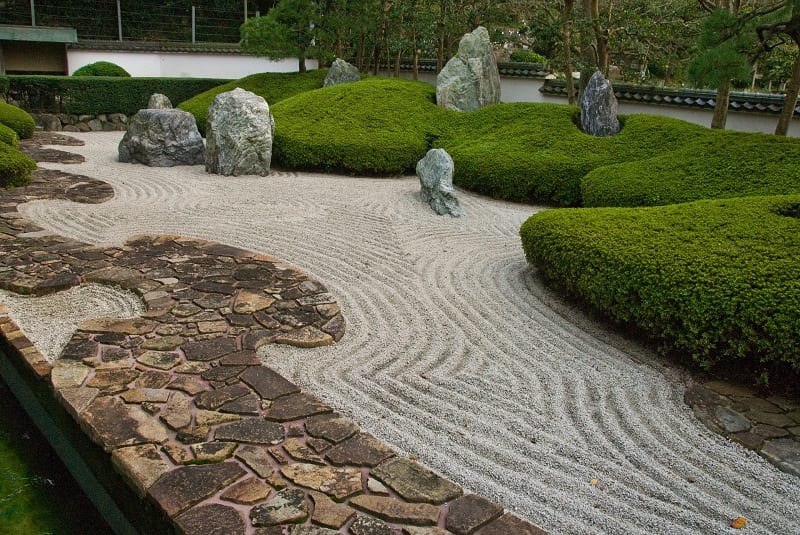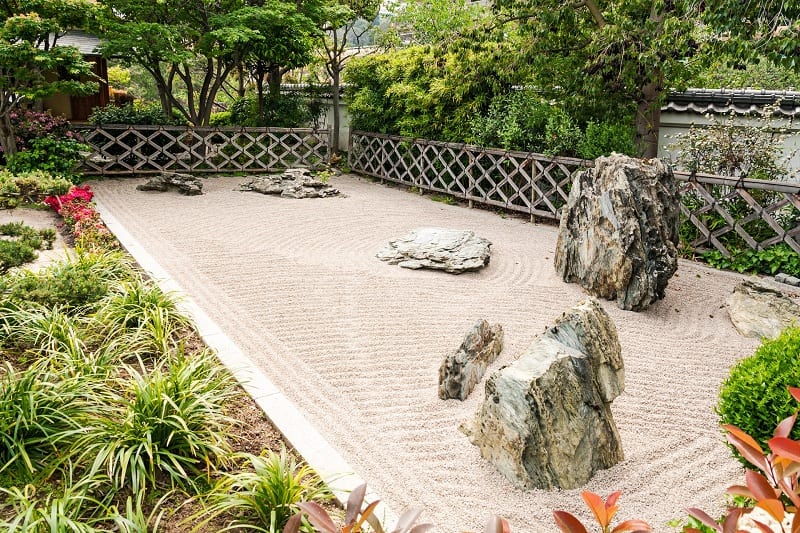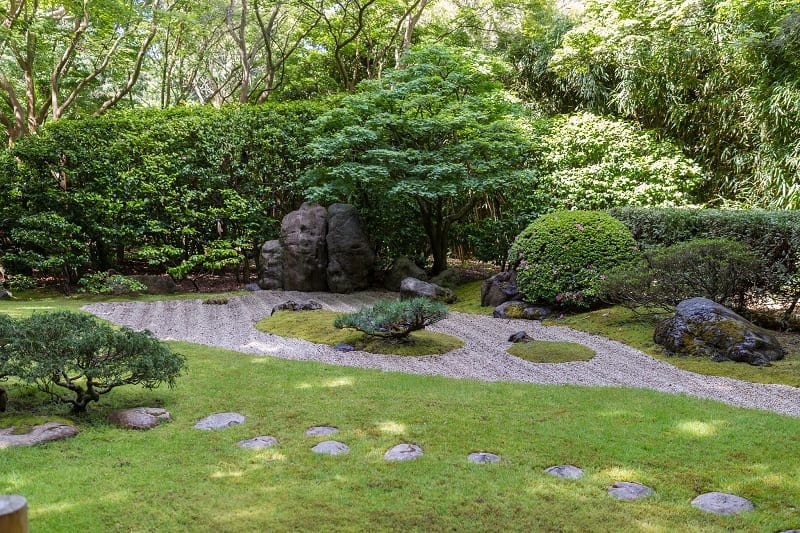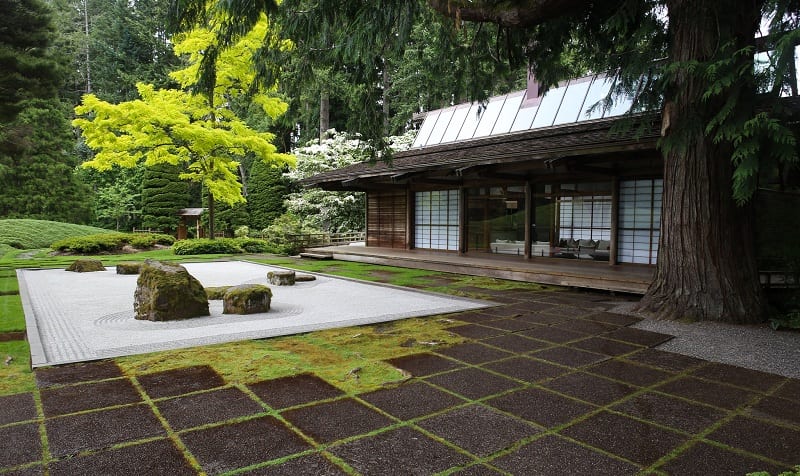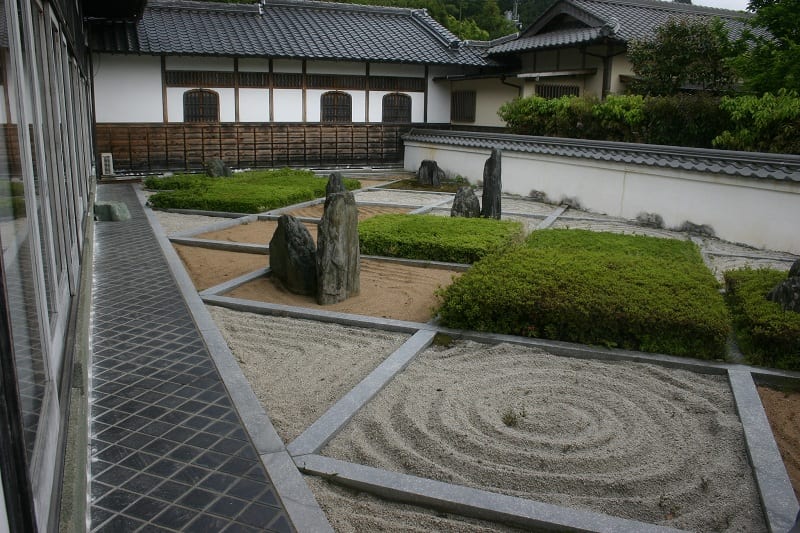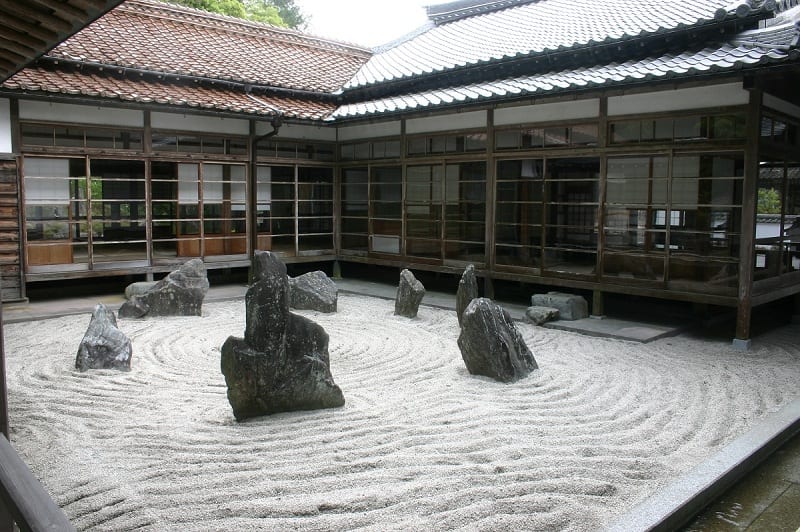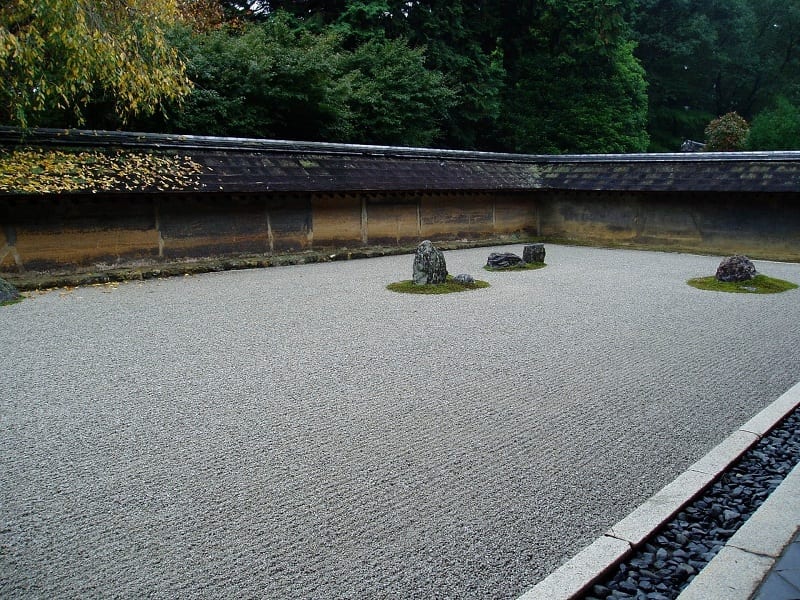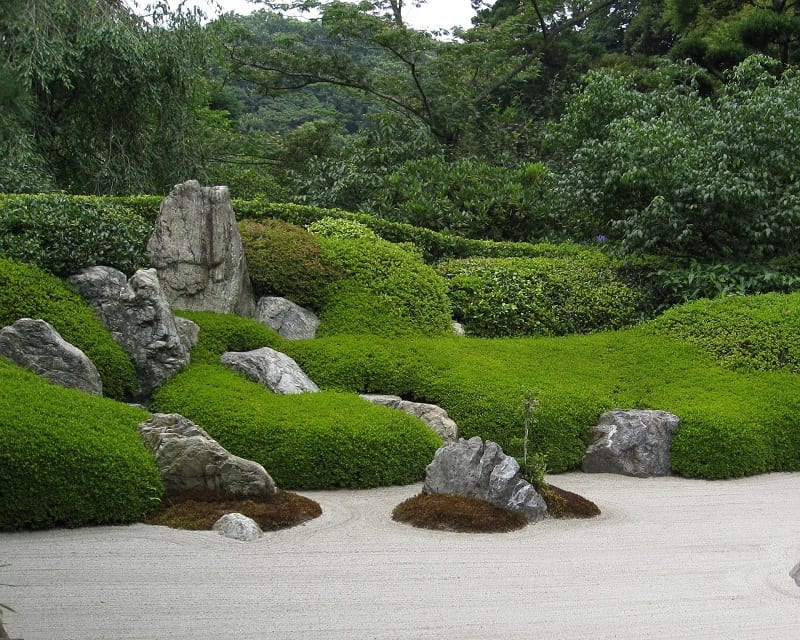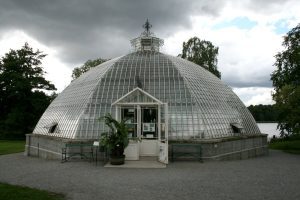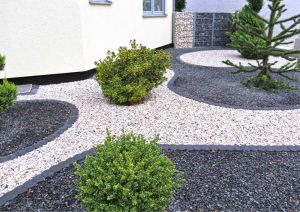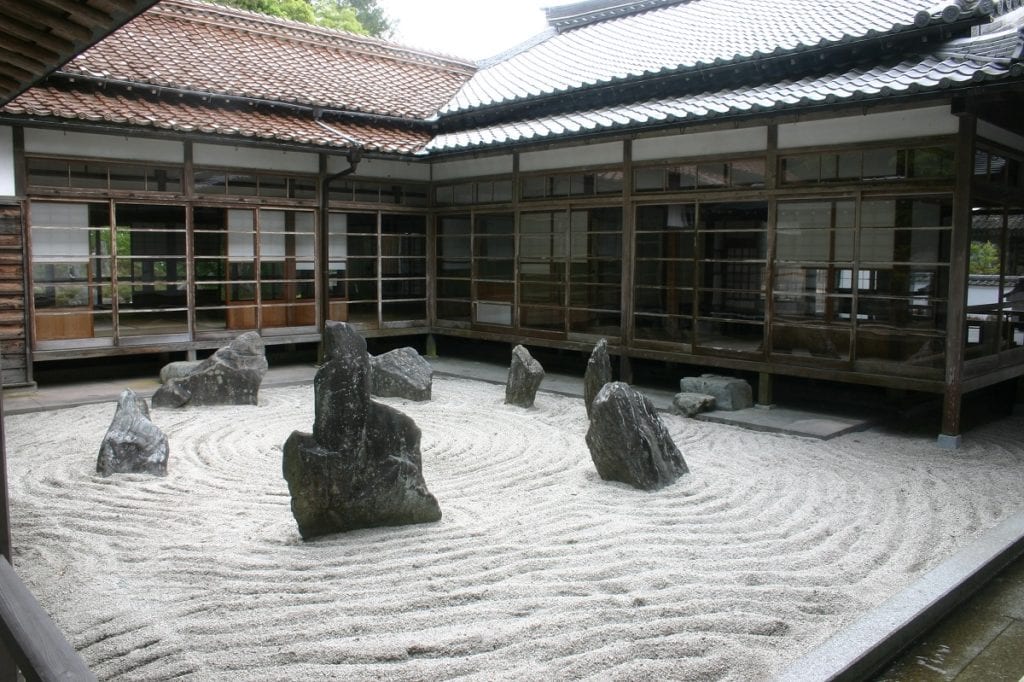
(Timothy Takemoto/Flickr)
Zen gardens are low maintenance and great to build in a difficult area of your yard. Since Zen gardens are mostly stone and gravel, they are perfect for that dry area in your backyard.
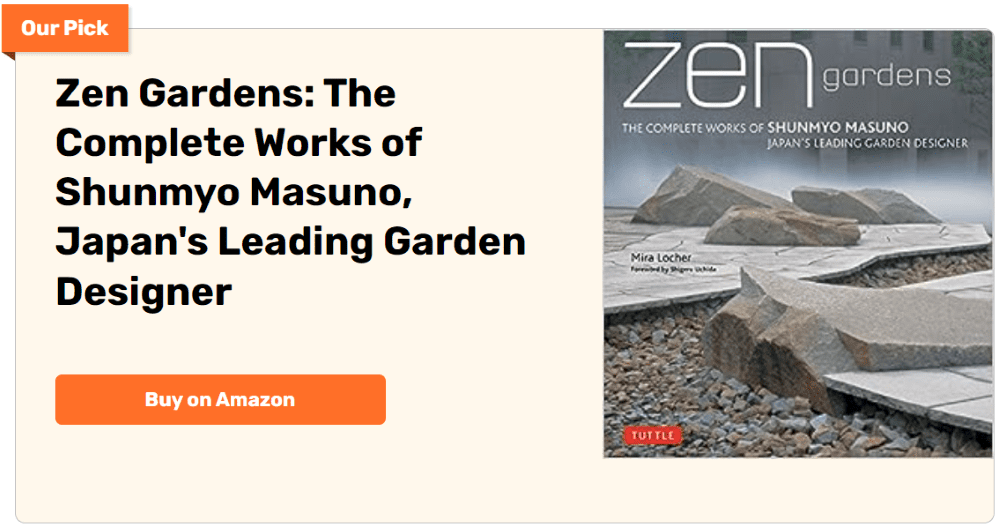
The Japanese Zen garden, also called the Japanese rock garden, is a calming space designed to represent a landscape.
Creating Your Zen Garden
Contents
In the old days, Japanese landscapers built gardens using rocks and boulders to represent land and mountains. They used gravel raked into patterns to create the illusion of water.
These traditional gardens were large, open spaces, but these days they can be any size.
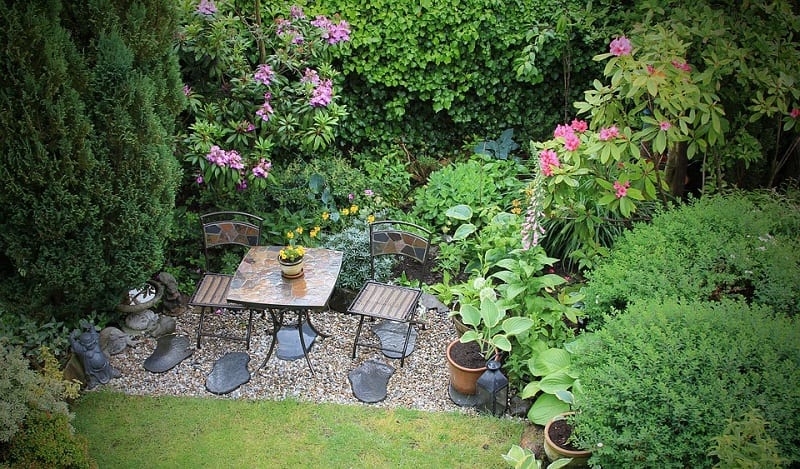
What You’ll Need
- Rocks or boulders
- Gravel or a water feature
- Bench, statue, or another focal element
- Plants
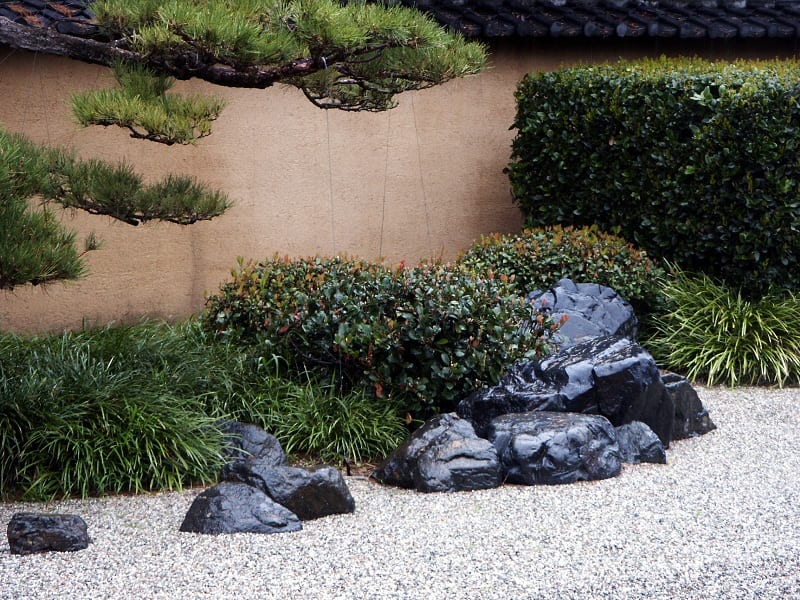
Designing Your Own
Once you’ve chosen an area for your garden, clear away any plants, grass, or weeds. Rake the soil. You want it flat and level. If necessary, add edging around the garden to keep grass and weeds at bay.
The next step is to decide where all of the largest features of the garden will go. Figure out the placement of all the elements of your garden.
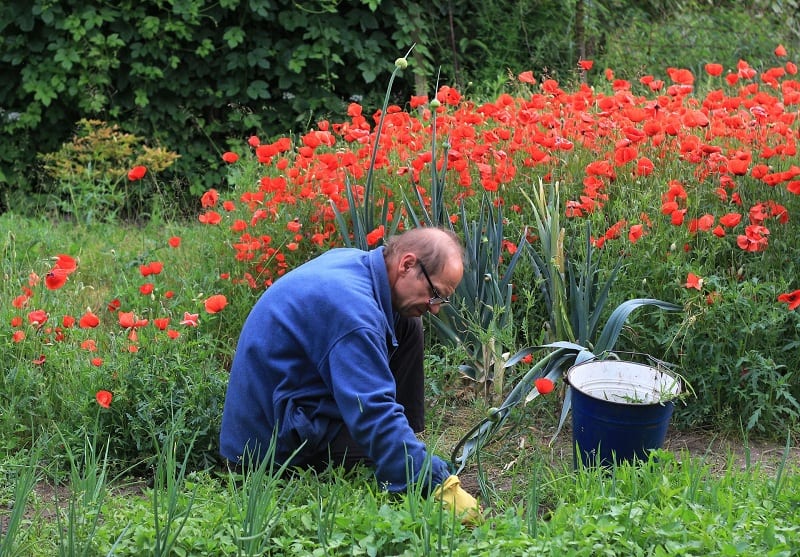
(Photo: Radoslaw Kulupa/Pixabay)
Gravel or Water
If you’re using gravel to give the illusion of water, make sure you lay it in patterns that mimic the movement of water.
You can add an actual water feature instead of gravel, as well. You don’t need anything fancy. A simple garden fountain will suffice.
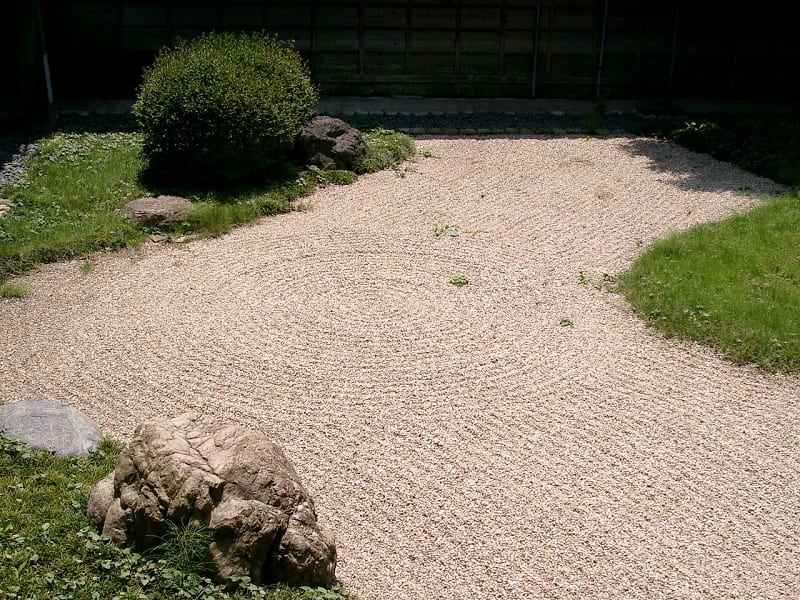
Plants for Your Garden
Plants are not a necessary feature. But if you’d like to add a few, you could either plant them right into the ground or just add a few, well-placed potted plants to the area.
Use low, spreading plants instead of upright ones. Bonsai plants, cacti, and succulents would be excellent.
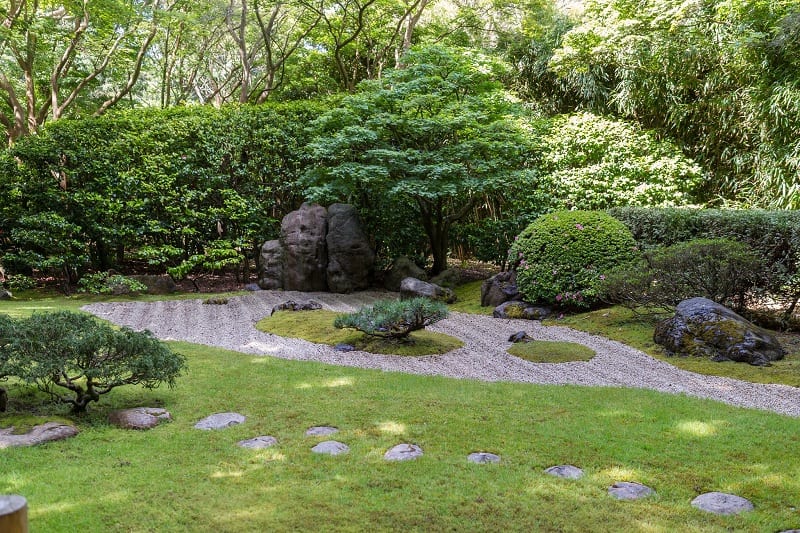
(Photo: Chris Favero/Flickr)
Naturalness, Simplicity, and Austerity
Creating your own Zen garden is a great way to reduce stress, improve your focus, and develop a sense of well-being. These beautifully stark spaces appeal to people who like carefully designed settings of raked sand or rocks and precisely clipped shrubs.
In designing your Zen garden, you should remember that they emphasize the principles of naturalness (Shizen), simplicity (Kanso), and austerity (Koko). Your garden should reflect these basic ideas.
Are you planning to build your own Zen garden? The gallery below should give you a spark of inspiration.
